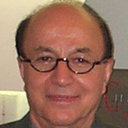Molecular Imaging and Biology 2019-Oct
Glucose-6-phosphatase Expression-Mediated [18F]FDG Efflux in Murine Inflammation and Cancer Models.
Only registered users can translate articles
Log In/Sign up
The link is saved to the clipboard
Keywords
Abstract
PURPOSE
2-Deoxy-2-[18F]fluoro-D-glucose ([18F]FDG) accumulation in inflammatory lesions can confound the diagnosis of cancer. In this study, we investigated [18F]FDG accumulation and efflux in relation to the genes and proteins involved in glucose metabolism in murine inflammation and cancer models.PROCEDURES
[18F]FDG accumulation and [18F]FDG efflux were measured in cancer cells (breast cancer, glioma, thyroid cancer, and hepatoma cells) and RAW 264.7 cells (macrophages) activated with lipopolysaccharide (LPS). The levels of mRNA expression were measured by real-time quantitative PCR (qPCR). The expression of glucose metabolism-related proteins was detected by western blotting. Dynamic [18F]FDG positron emission tomography-computed tomography (PET/CT) images were acquired for 2 h in tumor-bearing BALB/c nude mice and inflammatory mice induced by turpentine oil.RESULTS
[18F]FDG accumulation in MDA-MB-231 (breast cancer) increased with time, but that of HepG2 (hepatoma) reached a constant level after 120 min. [18F]FDG efflux in HepG2 was faster than that in MDA-MB-231. HepG2 strongly expressed glucose-6-phosphatase (G6Pase) compared with MDA-MB-231. [18F]FDG accumulation increased with time, and [18F]FDG efflux accelerated after the activation of RAW 264.7 cells. The expression levels of G6Pase, glucose transporter1 and glucose transporter3 (GLUT1 and GLUT3), and hexokinase II (HK II) increased after the activation of RAW 264.7 cells. [18F]FDG efflux in activated macrophages was faster than that in MDA-MB-231 cancer cells. MDA-MB-231 strongly expressed HK II protein compared with the activated RAW 264.7. In murine models, [18F]FDG accumulation in MDA-MB-231 cancer and inflammatory lesions increased with time, but that in HepG2 tumor increased until 20-30 min (SUVmeans ± SD (tumor/muscle), 3.0 ± 1.3) and then decreased (2.1 ± 0.9 at 110-120 min).CONCLUSIONS
There was no difference in the pattern of [18F]FDG accumulation with time in MDA-MB-231 tumors and inflammatory lesions. We found that [18F]FDG efflux accelerated in activated macrophages reflecting increased G6Pase expression after activation and lower expression of HK II protein than that in MDA-MB-231 cancer cells.

